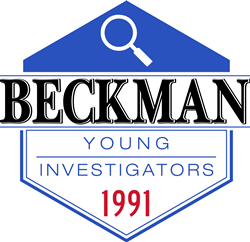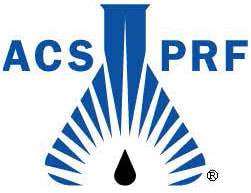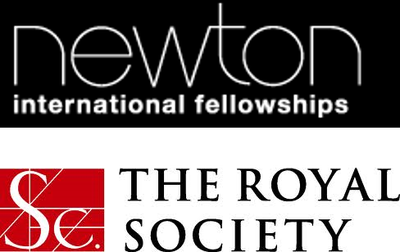The Ke research group aims to mimic the design principles of natural materials and to develop the next generation of artificial materials that possess sophisticated molecular features and hierarchy, multifunctionality, and chemical/mechanical stimuli-responsiveness. My research program is subdivided into three major thrusts:
Thrust 1 centers on the integration of three-dimensional (3D)-printing techniques with molecular design to develop stimuli-responsive 3D-printing hydrogels for soft robotics and tissue regenerations.
Thrust 2 weds the concepts of supramolecular self-assembly with crystal engineering to design a new family of porous organic materials with unique elastic properties. These light-weight, durable, and porous scaffolds can be used for water purification and petrochemical separations.
Thrust 3 aims to develop a Ca2+-dependent carbohydrate binding protein analog (synthetic C-type lectins) to bind mono- and oligo-saccharides.
Thrust 1 centers on the integration of three-dimensional (3D)-printing techniques with molecular design to develop stimuli-responsive 3D-printing hydrogels for soft robotics and tissue regenerations.
Thrust 2 weds the concepts of supramolecular self-assembly with crystal engineering to design a new family of porous organic materials with unique elastic properties. These light-weight, durable, and porous scaffolds can be used for water purification and petrochemical separations.
Thrust 3 aims to develop a Ca2+-dependent carbohydrate binding protein analog (synthetic C-type lectins) to bind mono- and oligo-saccharides.
Supramolecular 3D Printing Materials
centers on the integration of top-down three-dimensional (3D)-printing technology with bottom-up supramolecular design to develop smart supramolecular 3D printing materials
Key contributions: Facilitating 3D-printability to molecular assemblies through micro-crystallization
Representative work:
Angew. Chem. Int. Ed., 2017, 56, 4452 – 4457.
J. Mater. Chem. C, 2018, 6, 11956-11960.
Key contributions: Facilitating 3D-printability to small molecules through hierarchical co-assembly
Representative work:
Angew. Chem. Int. Ed., 2018, 57, 5105 – 5109.
J. Am. Chem. Soc., 2019, 141, 5154–5158.
Key contributions: Kinetic trapping meta-stable materials for 3D printing
Representative work:
Angew. Chem. Int. Ed., 2021, 60, 10186-10193.
Chem, (Cell Press) 2021, 7, 2442-2459.
Chem, (Cell Press) 2023, 9, accepted.
Review:
"Advanced Polymer Designs for Direct-Ink-Write 3D Printing" Chem. Eur.J., 2019, 25, 10768.
"Advanced Supramolecular Design for Direct Ink Writing of Soft Materials", Chem. Soc. Rev., 2023, accepted
Representative work:
Angew. Chem. Int. Ed., 2017, 56, 4452 – 4457.
J. Mater. Chem. C, 2018, 6, 11956-11960.
Key contributions: Facilitating 3D-printability to small molecules through hierarchical co-assembly
Representative work:
Angew. Chem. Int. Ed., 2018, 57, 5105 – 5109.
J. Am. Chem. Soc., 2019, 141, 5154–5158.
Key contributions: Kinetic trapping meta-stable materials for 3D printing
Representative work:
Angew. Chem. Int. Ed., 2021, 60, 10186-10193.
Chem, (Cell Press) 2021, 7, 2442-2459.
Chem, (Cell Press) 2023, 9, accepted.
Review:
"Advanced Polymer Designs for Direct-Ink-Write 3D Printing" Chem. Eur.J., 2019, 25, 10768.
"Advanced Supramolecular Design for Direct Ink Writing of Soft Materials", Chem. Soc. Rev., 2023, accepted
Hydrogen-bonded Cross-linked Organic Frameworks (HCOFs)
weds the concepts of supramolecular self-assembly with crystal engineering to design a new family of porous organic materials with unique elastic framework expansion for adaptive substrate adsorption.
Key contributions: Demonstrate HcOF's single-crystallinity and dynamic sorptions for iodine and iodide removal in water
Representative work:
J. Am. Chem. Soc., 2017, 139, 7172–7175.
J. Am. Chem. Soc., 2019, 141, 27, 10915-10923.
Angew. Chem. Int. Ed., 2022, e202214189
Key contributions: HcOFs constructed via co-crystallization followed by single-crystal to single-crystal transformation
Representative work:
Angew. Chem. Int. Ed., 2021, 60, 23176-23181.
Chem, (Cell Press) 2022, 8, 253-267
Review:
"Single-Crystalline Hydrogen-bonded Crosslinked Organic Frameworks and Their Dynamic Guest Sorption"
Acc. Mater. Res., 2022, 3, 1186–1200.
Representative work:
J. Am. Chem. Soc., 2017, 139, 7172–7175.
J. Am. Chem. Soc., 2019, 141, 27, 10915-10923.
Angew. Chem. Int. Ed., 2022, e202214189
Key contributions: HcOFs constructed via co-crystallization followed by single-crystal to single-crystal transformation
Representative work:
Angew. Chem. Int. Ed., 2021, 60, 23176-23181.
Chem, (Cell Press) 2022, 8, 253-267
Review:
"Single-Crystalline Hydrogen-bonded Crosslinked Organic Frameworks and Their Dynamic Guest Sorption"
Acc. Mater. Res., 2022, 3, 1186–1200.
Organic Cages and Cage-based Synthetic Lectins
aims to develop a Ca2+-dependent carbohydrate binding protein analog (synthetic C-type lectins) to bind mono- and oligo-saccharides. These synthetic C-type lectins could provide a detailed understanding of carbohydrate-protein interactions and be employed as synthetic tools to modulate carbohydrate mediated biological systems.
Key contributions: Tripodal organic cages with unconventional C(sp3)-H...O interactions
Representative work:
J. Am. Chem. Soc., 2023, 145, 40, 21723-21728.
Representative work:
J. Am. Chem. Soc., 2023, 145, 40, 21723-21728.











